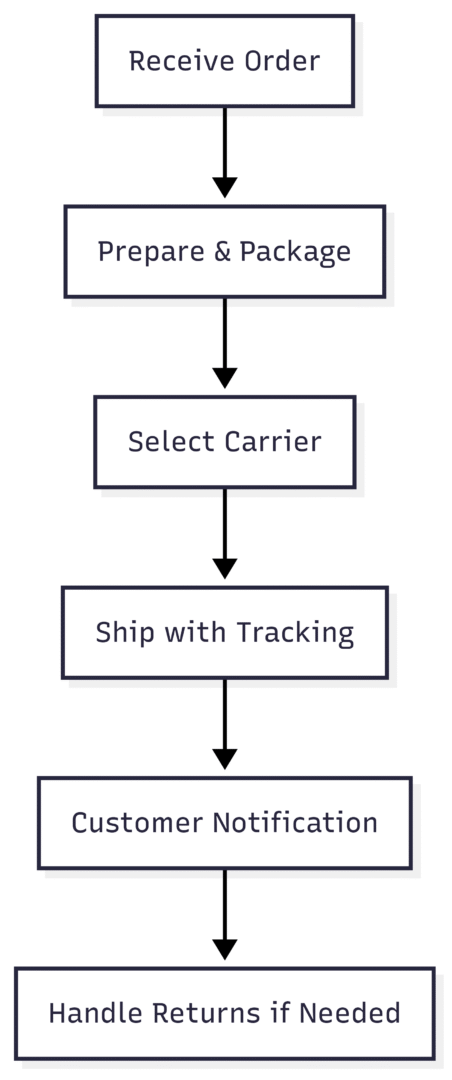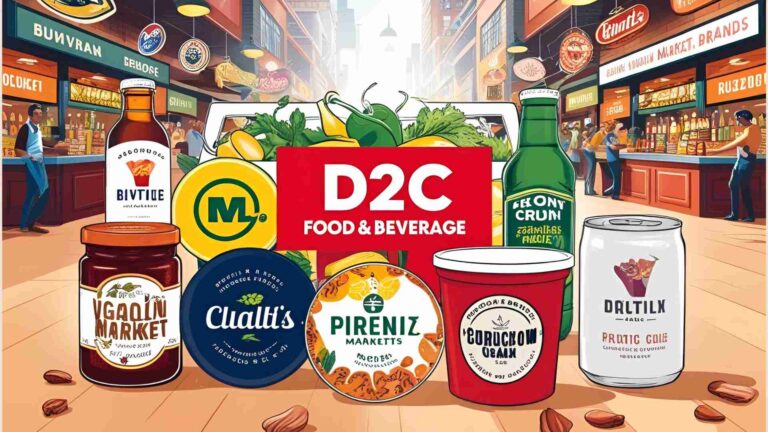8 Critical Steps to Launch Your Online Food Business
Launching an online food business offers entrepreneurs a pathway to share culinary creations with a broad audience while minimizing the overhead costs of traditional restaurants. With the global online food delivery market projected to grow significantly, this model provides flexibility, scalability, and diverse revenue streams like direct sales, subscriptions, and partnerships. However, success requires careful planning to navigate regulations, operations, and competition. This guide outlines eight critical steps, drawing from proven strategies to build a legal, efficient, and profitable venture. Focus on compliance, quality, and customer experience to stand out in a competitive landscape.
Step 1: Research Food Laws and Regulations
Compliance with food laws forms the foundation of any online food business. Every jurisdiction has specific rules governing what foods can be sold, where they are prepared, and how they are labeled. Ignoring these can lead to fines, shutdowns, or legal action.
Start by identifying your location’s cottage food laws, which often allow sales of low-risk, non-perishable items like baked goods, jams, and candies from home kitchens. High-risk items, such as dairy or seafood, typically require commercial facilities. Search for “[your state or country] cottage food law” to access details on allowed foods, sales limits, and online selling permissions.
Key requirements include:
- Business license from local authorities.
- Food handler’s permit or certification, often involving a short course on safe handling.
- Kitchen inspection, unless exempt under cottage laws.
- Labeling standards: List ingredients by weight, highlight allergens (e.g., nuts, dairy), and include nutritional info if required.
In the US, the FDA categorizes foods as low-risk (home preparation allowed) or high-risk (commercial kitchen mandatory). For example, low-risk includes dried fruits and cookies; high-risk covers perishable items like frozen meals. Registration with the FDA is needed for commercial kitchens, and an Employer Identification Number (EIN) from the IRS is essential for tax purposes.
Approval timelines vary—expect a few weeks for inspections. Non-compliance risks health hazards and loss of trust. Always consult local health departments or legal experts for tailored advice.
| Requirement | Description | Typical Cost (USD) |
|---|---|---|
| Business License | Permission to operate in your jurisdiction | $50–$200 |
| Food Handler’s Permit | Certification in safe food practices | $10–$50 |
| Kitchen Inspection | Health department review | $100–$500 |
| EIN Application | Federal tax ID | Free |
To visualize the compliance process, here’s a flowchart:

Step 2: Find Your Niche and Choose the Right Business Model
Defining your niche differentiates your business in a crowded market. Analyze gaps: What do customers crave but can’t easily find? Options include allergen-free snacks, vegan meals, ethnic sauces, or healthy meal kits.
Target your audience: Busy families may want ready meals; foodies seek bold flavors. Test ideas via small batches at markets or social media feedback. Validate demand—ensure people will pay for your offerings.
Select a model:
- Direct-to-consumer: Higher profits, but handle all marketing and shipping.
- Wholesale: Lower daily effort, focuses on volume sales to retailers.
- Subscription boxes: Steady revenue through recurring deliveries.
- Custom orders: Ideal for premium, personalized products.
Production setup matters. Home kitchens suit small starts; scale to commercial spaces as needed. Examples like Minimalist Baker succeeded by niching in simple, plant-based recipes with 10 or fewer ingredients, linking to shoppable products like almond flour.
| Business Model | Pros | Cons | Example Products |
|---|---|---|---|
| Direct-to-Consumer | High margins, full control | Marketing intensive | Artisanal sauces |
| Wholesale | Scalable volume | Lower per-unit profit | Bulk granola |
| Subscription | Predictable income | Logistics planning required | Monthly meal kits |
| Custom | Premium pricing | Time-consuming | Personalized cakes |
Step 3: Optimize Production and Streamline Operations
Efficient production ensures consistency without burnout. Invest in tools based on your niche:
- Bakers: Stand mixers, digital scales ($50–$200 each).
- Meal prep: Vacuum sealers ($30–$100), portion containers.
- Sauces: Immersion blenders ($20–$80), pH meters.
Batch production: Calculate weekly sales and add a 20% buffer. Use inventory tools to track supplies and minimize waste. Create master recipes and checklists for uniformity.
Maintain food safety: Log temperatures, test shelf life, and separate raw/cooked areas. Scale by hiring help or renting shared kitchens as demand grows.
| Tool | Specification | Price Range (USD) |
|---|---|---|
| Stand Mixer | 5-quart capacity, multiple speeds | $200–$400 |
| Vacuum Sealer | Automatic operation, bag cutter | $50–$150 |
| Digital Scale | Up to 10kg capacity, tare function | $20–$50 |
Diagram for production flow:

Step 4: Choose the Best Online Sales Channels
Selecting platforms impacts visibility and control. Food marketplaces like Etsy or Goldbelly offer quick exposure but charge high fees (15–20%). For full ownership, build your own site.
Options:
- WordPress + WooCommerce: Free core, hosting $5–$20/month.
- Shopify: Beginner-friendly, $29–$299/month plans.
- Square Online: Integrated payments, free basic plan.
Social selling: Instagram Shop or Facebook Marketplace for low-cost starts. Key questions: Does it handle perishables? What are fees (e.g., Shopify 2.9% + $0.30 per transaction)? Ensure dietary filters and easy updates.
| Platform | Key Features | Pricing (USD/month) |
|---|---|---|
| WooCommerce (WordPress) | Customizable, plugins for recipes | Hosting: $5–$20 |
| Shopify | Built-in eCommerce, apps | $29–$299 |
| Square Online | Free storefront, payments | Free (transaction fees apply) |
| Etsy | Marketplace for artisanal foods | Listing: $0.20 + 6.5% fee |
Step 5: Build a Brand and Market Your Business
A strong brand fosters loyalty. Define your unique story—family recipes, local sourcing? Use consistent visuals: colors, fonts, photography.
Content marketing: Share recipes via blogs or WP Recipe Maker for SEO boosts. Add affiliate links to ingredients. Build email lists for tips and updates.
Promotions: Social media (Instagram for visuals), SEO for organic traffic, PPC ads (Google Ads, $1–$2 per click). Gather feedback via reviews and surveys.
| Marketing Channel | Strategy | Estimated Cost (USD) |
|---|---|---|
| Social Media | Posts, stories, ads | $0–$500/month |
| Email Marketing | Newsletters, promotions | $10–$50/month (tools like Mailchimp) |
| SEO | Keyword optimization | Free (tools) or $500+ for agency |
| PPC Ads | Targeted campaigns | $100–$1000/month |
Step 6: Plan Your Finances for Profitability
Financial planning prevents failure. Calculate costs: Ingredients (30–35% of price), packaging (5–10%), labor (25–30%), delivery (15–20%).
Pricing: Aim for 10–20% margins. Research competitors—e.g., similar sauces at $8–$12. Use tools like spreadsheets or QuickBooks ($25/month).
Budget for growth: Marketing ($500–$2000/month), emergency funds. Track taxes; some states require sales tax collection.
| Cost Category | Percentage of Price | Example (Per $10 Item) |
|---|---|---|
| Ingredients | 30–35% | $3–$3.50 |
| Packaging | 5–10% | $0.50–$1 |
| Labor | 25–30% | $2.50–$3 |
| Delivery | 15–20% | $1.50–$2 |
Step 7: Set Up Efficient Shipping and Delivery Systems
Delivery maintains product quality. Use insulated packaging for perishables (foam containers, gel packs, $1–$5 per unit). Shelf-stable items: Sturdy jars or pouches.
Partners: UPS/FedEx for national ($10–$30 per shipment), DoorDash for local ($5–$15). Offer flat rates or free shipping thresholds.
Policies: Provide tracking, clear returns for damaged goods. Go eco-friendly with recyclable materials.
| Shipping Option | Radius | Cost per Shipment (USD) |
|---|---|---|
| Local Courier (e.g., DoorDash) | 5–10 miles | $5–$15 |
| National (UPS) | Nationwide | $10–$30 |
| Expedited | 1–2 days | $20–$50 |
Chart for shipping process:

Step 8: Launch and Scale Your Business
Launch with a soft opening: Test processes, gather feedback. Promote via social media, emails, and events.
Scale: Monitor performance, expand offerings based on data. Partner with influencers or add niches like meal kits.
Focus on customer experience: Timely service, feedback loops. Aim for 60–70% repeat business.
| Growth Metric | Target | Monitoring Tool |
|---|---|---|
| Repeat Customers | 60–70% | Analytics software |
| Monthly Revenue | 20% growth | Accounting tools |
| Customer Satisfaction | 4.5+ stars | Surveys |
By following these steps, your online food business can thrive. Prioritize quality, adaptability, and customer focus for long-term success.
Please share this 8 Critical Steps to Launch Your Online Food Business with your friends and do a comment below about your feedback.
We will meet you on next article.
Until you can read, Where Food Bloggers Get Their Recipe Ideas





